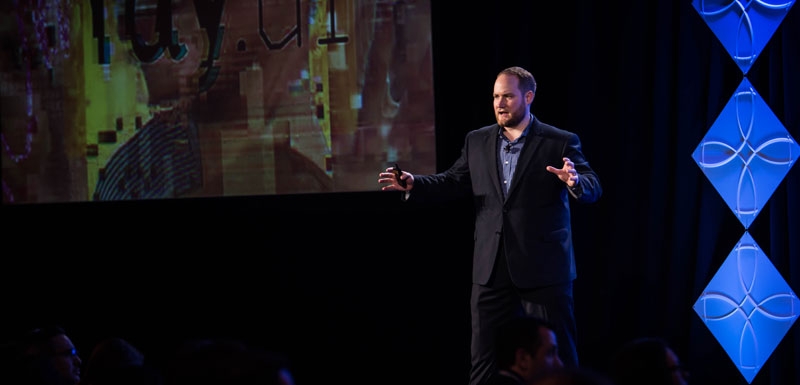B2B marketers are challenged with delivering an exceptional customer experience (CX). They all know and say that CX is very important, but they have yet to master it, according to Jeff Marcoux, CMO Lead for Worldwide Enterprise Marketing at Microsoft, during his keynote at the B2B Marketing Exchange in Arizona.
“There are all these tools that are supposed to help us with our marketing,” Marcoux said. “Yet, over time, when we add a new tool, we add more data. Then we add more silos and that leads to dashboards. And dashboards lead to analysts, which leads to cost and it still doesn’t work.”
The key, he said, is to transform marketing organizations through a combination of technology, process and cultural changes.
“The transformation is part technology, [part process] and part culture,” he said. “If you don’t have that, you will fail. We have to mature from where we are today with the tools that we have, and [we need to] realize the value and focus on the customer experience. There is no silver bullet that will solve all our problems.”
To excel at CX, marketers can begin by zeroing in on who their customer is, Marcoux said. This includes assessing whether they are a product-centric or customer-centric company, and building out personas. But marketing departments are huge, and you can’t simply target “marketers” as a persona.
Marcoux suggests finding out what the buyer’s challenges are as a person. What are the things that motivate them to move forward?
“The most important thing that’s part of the persona process that a lot of marketers skip is, when they know who the individual is, where do they get their content? What do they read? What channels are they on?” he said. “Maybe they’re on Reddit and you don’t need to be on Twitter. Once we have that, we have to look at what content they engage with.”
The next step is to identify the total addressable market (TAM), which Marcoux said he does in a different way compared to many marketers. “You have the TAM and then you have those that are not a good fit,” he said. It might be because of their location, culture or they’re language, but they just aren’t a good fit for the company now. Then there are those who are a fit and those who are engaged, competitor’s customers, and so on.
The Stages Of A Purchasing Cycle & Content Journey

Marcoux also shared what he sees as the five distinct stages of the purchasing cycle:
- Open to possibility — “This is the general ‘I have something in place’ or ‘I’m learning about what’s going on.’”
- Decision to change — “Maybe they got a raise, or maybe they’ve moved. What is that catalyst and decision to change? That’s a core signal you need to identify.”
- Evaluating — “Inbound, content, education, nurture: all this stuff is so important because you’re evaluating all the different aspects of what’s available.”
- Shopping — “This is where they zero in on the last couple of choices. This is where sales shows up.”
- Experiencing — “What is [the buyer’s] peer community saying about their decision?”
Following these stages, marketers must match the persona to the content journey, Marcoux said. He touched on the steps the customer goes through in that journey:
- Ground cover — “This is hitting on the ‘open to possibility’ stage, where you’re educating people before they have a need.”
- Advertising — Ad words, targeted advertising through ABM and how do we add value as we go through these difference processes.
- Conversion content and retargeting — Think about how to do to this in an honest way. Take a large piece of content and create smaller assets out of it.
“The other big piece that a lot of people are now taking a look at in the context of the journey right now are things like personalization and real-time personalization,” said Marcoux. “We have all this phenomenal data around us, and we can do real-time personalization in web, email and social. I’m finding that a lot of companies haven’t even scratched the surface of this, yet they’re looking for the next shiny object.”
Tips For CX Success
A solid customer experience starts with the customer journey. “Before you start any project, go through the customer journey,” Marcoux said. He closed out his session by providing some key takeaways to help get marketers on the right path.
- Start a list of everything that “sucks” and start improving things over time.
- List out the key personas.
- Map out the key touch points and where your content lies and call out the gaps.
- Simplify your process and choices you’re presenting so your customers’ brains are not on overload.
- Don’t assume that the default is what everyone does.
- Be fearlessly authentic in your content.
- Tell your origin story.
“The best last experience your customer had anywhere becomes the expectation of the experience they expect,” Marcoux said. “Even in our consumer lives—we expect it. Any brand that’s not living up to that bar is getting points against them.”







